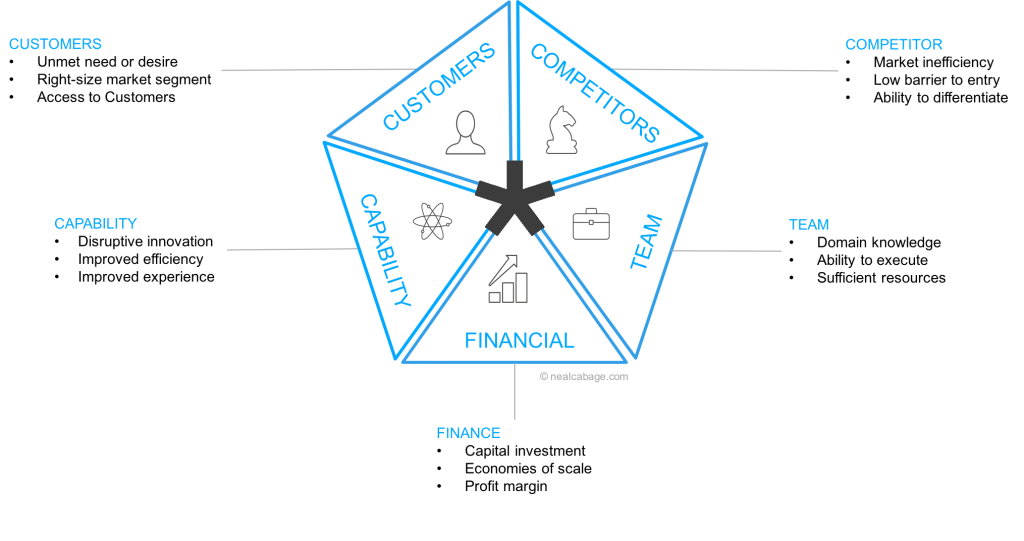How to Recognize Great Ideas Worth Working On
Businesses thrive on identifying opportunities and making the most of them. A good entrepreneur or product manager must have rules for an effective evaluation of opportunities to know what to adopt or ignore. Opportunity heuristics can help to make informed decisions on what products or solutions are worth devoting resources to.

What Are Heuristics?
Heuristics are simply rules of thumb that you can use to guide your decision-making when having limited time or information. They typically come from experience or are based on generally accepted truths.
There is significant reliance on heuristics in the field of Usability and Human-Computer Interaction (HCI). They help in designing a great user experience. They are particularly useful for making witty hypotheses and building prototypes.
You can use heuristics to guide the setting up of a startup and ensuring that it runs efficiently. They help in making a good guess of the best way to start, thereby improving chances for success.
What Are the Opportunity Heuristics
It can be a quite difficult task trying to identify product opportunities and their viability. Recognizing great opportunities isn’t enough; you need a good means of evaluating what’s worth pursuing. Many entrepreneurs and product managers can do better when it comes to effectively sifting through ideas.
In his book The Smarter Startup, Neal Cabage described these important factors (heuristics) that can help in identifying opportunities that are more likely to be successful and the Product Opportunity Scorecard was introduced to account for these heuristics when evaluating new product opportunities.
Both of these models work with underlying factors known as opportunity heuristics. There are 15 in all and are classified into five categories:
- Customer heuristics
- Competition heuristics
- Capability heuristics
- Team heuristics
- Finance heuristics
Customers
When looking for new opportunities, the best way to start is by considering the customer. You want to think of the following:
- Customers’ needs or desires that are yet to be properly addressed
- Size of the market segment that you can address with resources available
- Ease of access to customers
Competition
These heuristics have to do with how to go about getting an edge over the competition in a sustainable manner. They include:
- Market inefficiency that you can zero in on and improve upon
- Minimal barriers to entry
- Satisfactory ability to differentiate or customize your solution
Capability
With these heuristics, Cabage suggests going the proven way. Consider already validated market or something with a demand that has just become possible to fulfill. Think of:
- Disruptive innovation that helps you to solve a problem better than the competition
- Improved efficiency arising from new capabilities
- Better user experience through early adoption of new technologies and capabilities
Team
Do you have the right team to deliver on an opportunity? That’s what these heuristics are about. Consider these to be sure you have what it takes to succeed:
- Domain knowledge or in-depth understanding of the market you’re entering
- Ability to execute well and build useful relationships
- Sufficient resources to support success
Finance
These heuristics place more importance on opportunities that require lower starting capital while delivering better returns. So you want to think of:
- Capital requirements for developing and supporting the product
- Economies of scale or ability to make greater profits with increased volume
- Projected profit margin
You can read up Cabage’s post for more detailed explanations of these opportunity heuristics.
The Product Opportunity Scorecard
The scorecard makes use of the 15 heuristics above, grouped into five themes. An opportunity is then scored (A-F) for each of the 5 categories, just like a school report card.

You might wonder why letters are used for grading opportunities instead of numbers. The latter adds a sense of precision or exactness. However, these evaluations are merely subjective, so there’s no need for being too precise, and letter grades are used to avoid the perception of false precision.
When evaluating an opportunity, you simply look at the overall average grade. The grading system makes clear where you excel the most and where you are lacking. It’s that simple – but helps ensure the bases are covered when evaluating an opportunity.
These opportunity heuristics may help to reduce the chances of you working on something that doesn’t justify match your goals and available resources, among others. They enable you to decide the best way to proceed. Lean methodology can later be used to improve the opportunity after you have started.


